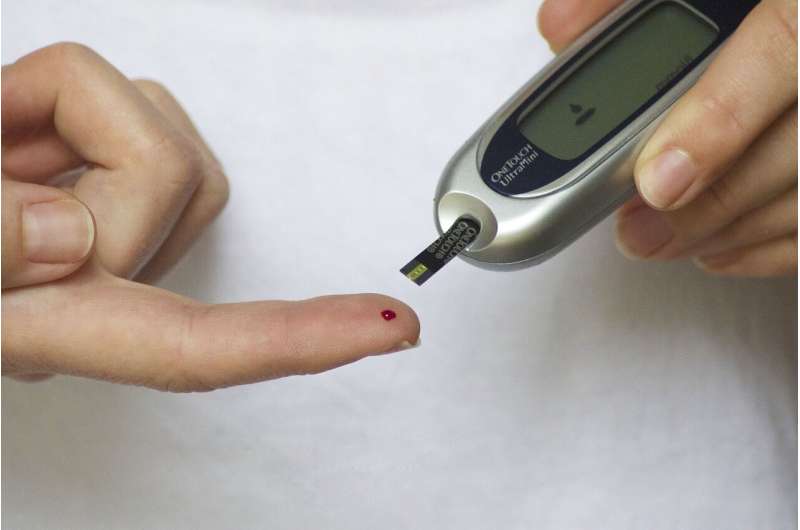Credit: CC0 Public Domain
What's new in the field of nutrition for people with diabetes? Lots, according to registered dietitian nutritionist and certified diabetes care and education specialist, Mary Ann Hodorowicz. In a recent webinar for nutrition professionals, she updated us on the latest guidelines to control the ABC's of diabetes.
A is for A1C. That's a blood test that reflects a person's average blood glucose (sugar) level over the past 3 months. A normal A1C helps prevent many of the complications that can plague people with diabetes.
B is for blood pressure. Heart attack and stroke are more common in people with diabetes. And food choices—such as the DASH diet (Dietary Approaches to Stop Hypertension) - can lower the risk.
C is for cholesterol including harmful LDL and beneficial HDL. Both measures can be improved with diet choices.
Here are some of the recent findings and recommendations to help people with diabetes reach these goals:
A carb is not a carb. Carbohydrates from white rice, for example, tend to raise blood sugars higher than the same amount of carbs from pasta.
High fat, high protein meals can raise blood sugars, too. And studies show that too much protein and fat can keep blood sugars high for a longer period of time.
There is no one ideal amount of carbohydrates for people with diabetes. The only way to determine one's carb "budget" is to track how their own blood sugar responds after certain meals.
Dietary fiber—especially soluble fiber—helps keep blood sugars, as well as cholesterol, under control. Interestingly, the highest amounts of these soluble fibers are found in peas, beans and psyllium fiber supplements such as Metamucil?. In fact, the newest diabetes guidelines from the American Diabetes Association now advise people with diabetes to consume 7 to 13 grams of soluble fiber a day.
Eat a low carb breakfast. A spinach-cheese omelet, for example, not only kept morning blood sugars from spiking in people with diabetes but also reduced blood sugars for the rest of the day when compared to a higher carb fruit and cereal breakfast.
At mealtime, eat your non-starchy veggies before diving into carbs. For example, eat your salad or other vegetable before downing pasta, bread or potato. When compared to eating veggies and carbs together, starting a meal with vegetables can help keep after-meal blood sugars under control.
There is no one ideal meal plan for everyone with diabetes. An individualized approach is best. And a nutrition expert with expertise in diabetes can be a big help. Look for the credentials RD or RDN (registered dietitian nutritionist) along with CDCES (certified diabetes care and education specialist). You may still see experts with the CDE (certified diabetes educator) title as we transition to this newest designation this year.
©2020 The Monterey County Herald
Distributed by Tribune Content Agency, LLC.























